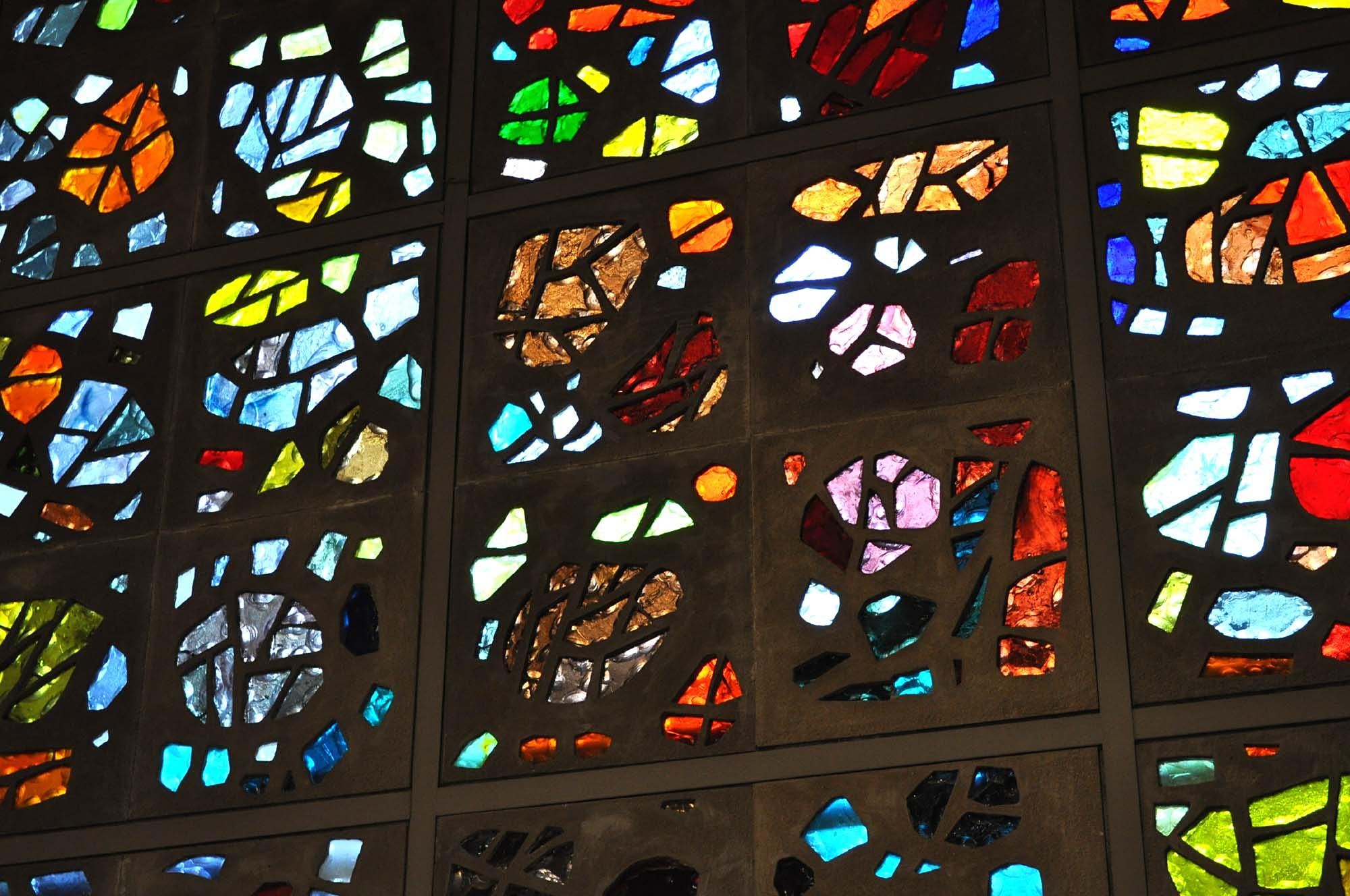Presented as part of Doors Open Baltimore Spiritual Week
This program is hosted on Zoom and Facebook Live. Upon registering you will receive an email confirmation and a Zoom link. If you do not receive a link, please contact ndennies@aiabalt.com. If you do not contact us at least 1 hour prior to the start of the program, we cannot guarantee admittance.
Among the innovations of American sacred architecture after World War II was an interrogation of the decorative arts’ role both in religious life and in architecture itself. One common approach used by architects around the country can be defined as “Opticalism,” a neologism that denotes the deployment of aggressive and large-scale visual effects within spaces of worship. Opticalism represented a semiotic innovation, having to do with attenuating the relationship between sign and symbol.
Architect Jeremy Kargon will present three local religious buildings, completed between 1954 and 1963, that illustrate Opticalism’s characteristics: Church of the Redeemer (Pietro Belluschi, Architect with Rogers, Taliaferro, and Lamb); Har Sinai Congregation (Buckler, Fenhagen, Meyer, and Ayers, Architects); and St. Paul’s Lutheran Evangelical Church (Charles Stade, Architect). In these buildings, religious imagery was displaced within worship spaces by the use of exaggerated optical effect. No longer merely situated within architecture, artwork itself defined the spatial precinct of each building’s sacred rites.
Tickets are donation based. We encourage you to give what you can to support BAF. Your support helps us make up for lost tour and program revenue from COVID-19 and create more virtual programs like this.
Learn more about Doors Open Baltimore 2020
